Instead of another TR from my last three weeks of canoeing the Everglades, I thought I would post some tricks I have finally (!) figured out
For those used to Northern canoe camping trips, the Everglades can seem foreign and intimidating. Most people think first of alligators and snakes to contend with, but in paddling country you will see little of the former. And in 100 days of canoe camping in the Everglades, I have yet to see a snake. Gators prefer fresh water. Your best chance of finding them is along the highway or on an airboat tour. Airboats do not venture into the Gulf and are prohibited in the National Park. So here is your one alligator picture.
Taken in the early AM near Sweetwater Chickee which is in a freshwater area north of the Wilderness Waterway.
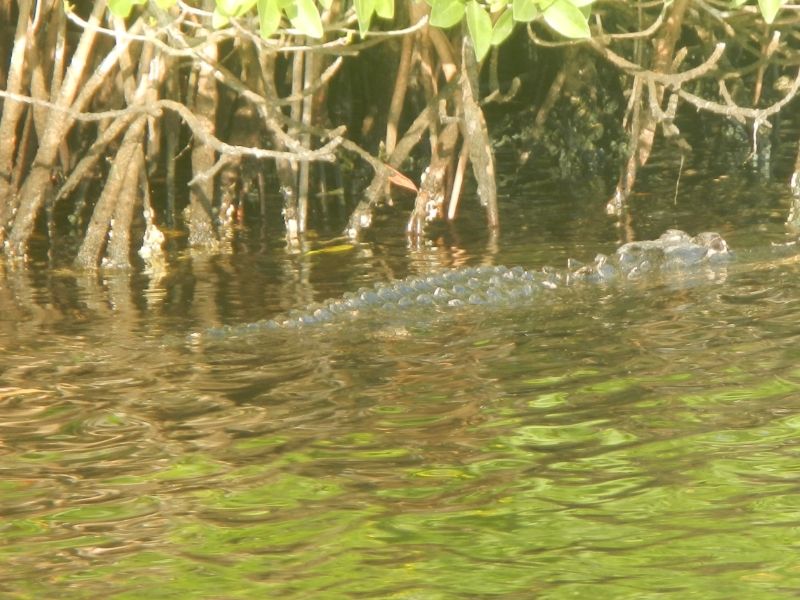
There are nearly 1000 miles of paddling trails in the Everglades. With a good chart and a mapping GPS you can make your own trip. People often say “I did the Everglades” when all they did was paddle the 99 mile long Wilderness Waterway. That route was designed for motorboats in the 1970’s to increase use of the National Park. The chickees were designed for motorboaters and for years lacked ladders. Of course there is way more use nowadays by paddlers than motorboaters. The point is that there is way more variety in ecosystems you see if you avoid the Waterway. I use parts of it and parts north of it and often loop back along the Gulf of Mexico.
Chickee mounting has its own set of challenges. I use a set of loops to snug the boat to the ladder tight.
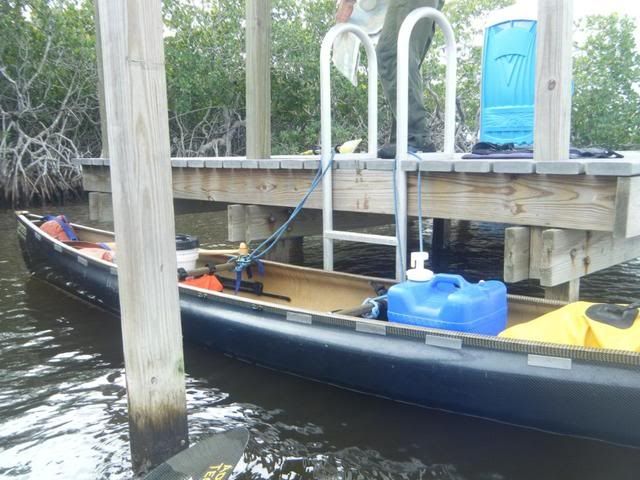
You can never have too many lines. Of course bow and stern lines are de rigeur to tie the boat up. Also a consideration is to keep the boat away from the decking lest high tide jam it under the planks.
Why? Cause sometimes you have to stand on the gunwale to get a leg up to that bottom rung of the ladder, especially at low tide!( note location of bottom step)
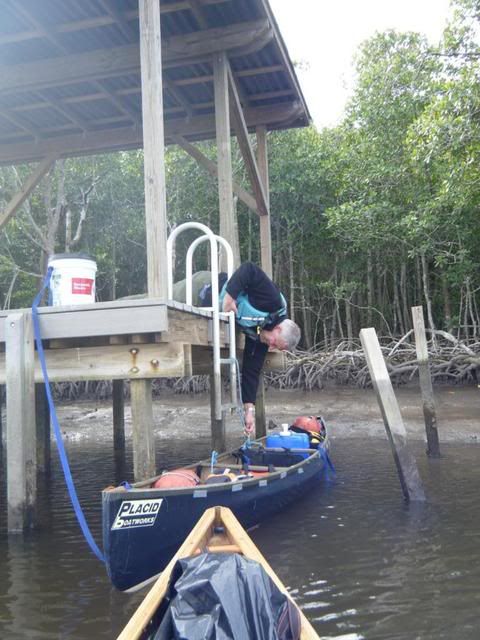
It’s unsettling to drop things through the spaces in the chickee floorboards, and to get sand in your stove or soup while on beaches. A square of packcloth comes in mighty handy.
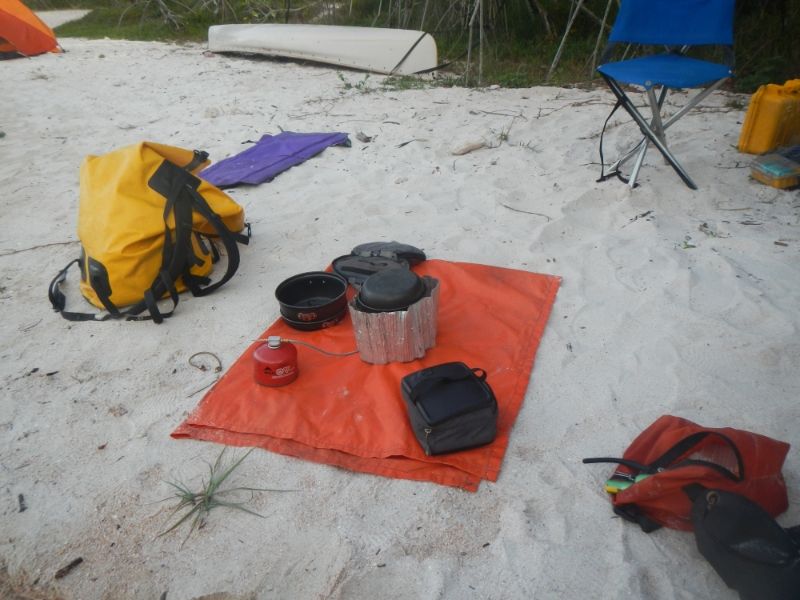
That’s a CampTime Roll A Chair..it’s a bit much at $50 but gives good back support, is very light and does not sink in the sand. Plus its normal chair height for us oldsters.
Let’s talk of campsite hazards. First is oyster bars. On the Gulf you may land at low tide and be presented with oyster bars to cross. They are incredibly sharp. Don’t even think of going barefoot or wearing open toed sandals! Those clumps of black at the bottom of the mangrove prop roots are oysters. I wear wetsuit booties with fairly thick soles so in case I step in mud they don’t get pulled off.
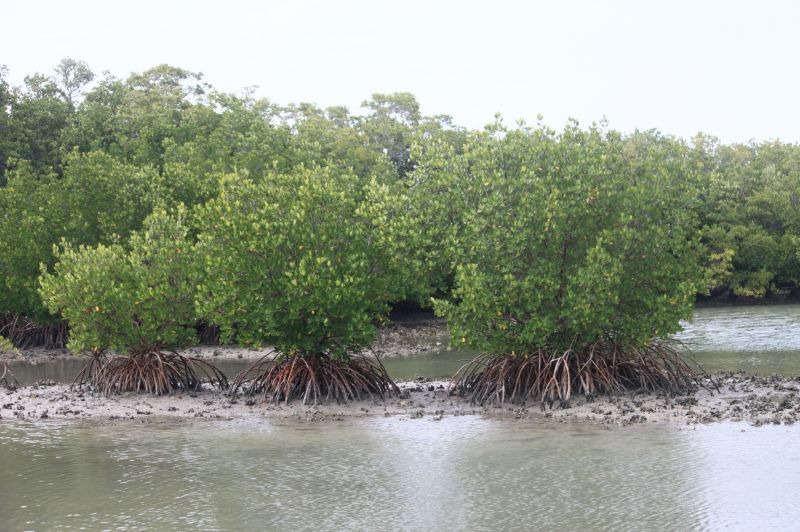
Other things that can stick you at camp. Prickly pear cactus.
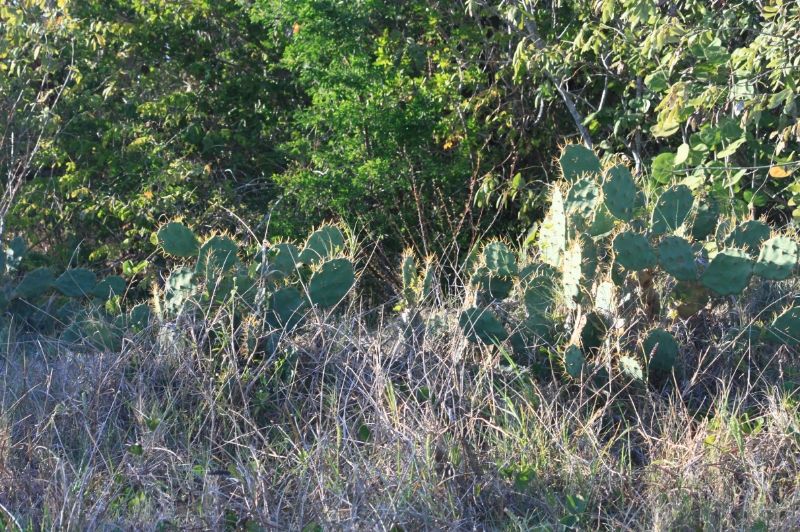
Sandbur. If you wade through grass LOOK first. There are several native grasses. Some are fine. Some have these!
These little hand grenades are about a quarter inch across. Wade through low grass and you may have to take hundreds off. Plus they WILL go through Crocs. Imagine your feet in open toed sandals in this!

More pricky stuff.. Seed pods. But they hang from tree branches and can be avoided
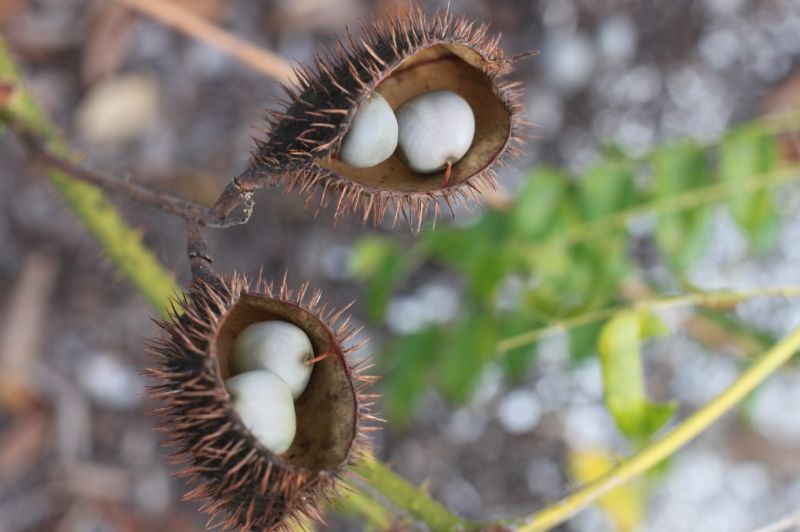
Bugs. DEET seems to have little effect on tropical biting bugs including no seeums (they seem to be different than Northern ones) so a wardrobe of bug spray might be needed. I have had good luck with the cactus juice one(in the middle with the label gone). It’s hard to find, but I have not been tempted to run and break off a prickly pear cactus and spread goo on me.
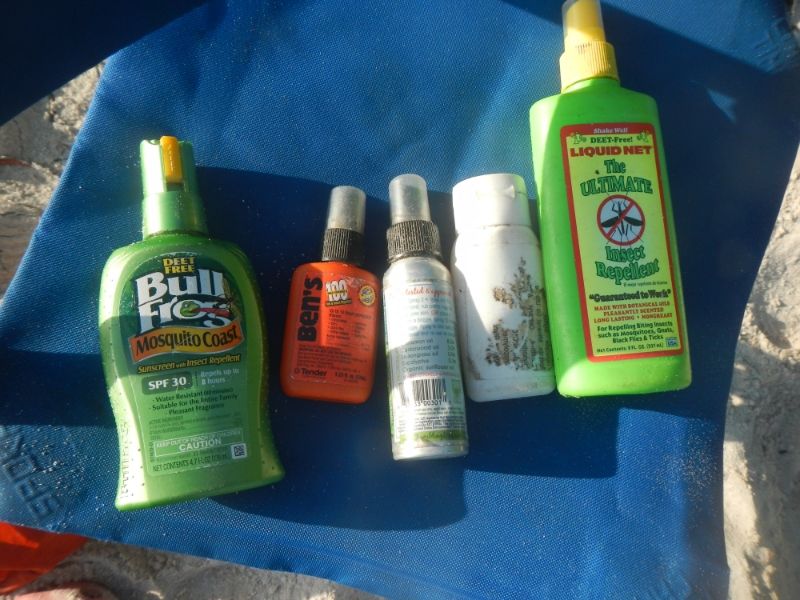
Sanitation. It seems unsightly that most campsites have portapotties, and in plain sight of the water. But they are serviced by boat, and the boat has to get close enough to have a hose reach the tank.
Here is SS Stinky, which services each site once a week.
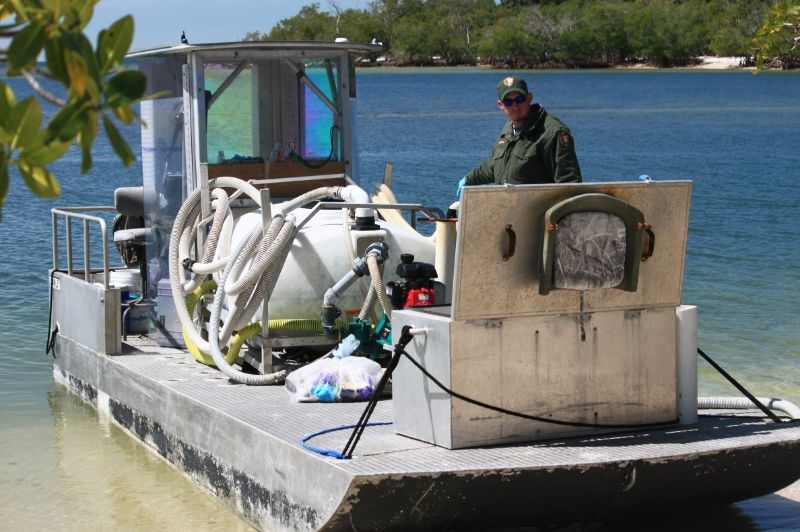
Big blue jug. There is no easily reachable source of fresh water in the Everglades so you have to bring a gallon a day per person. In a hard sided container. This does double duty as a deadman to anchor your tent. Its best to put the tent on the beach and not in the buggy woods. Cross ventilation is a plus especially in the buggy early morning. The wind had started to blow here. Later it actually flattened a side of the tent. Always plan for wind, and tie both ends of your canoe at night
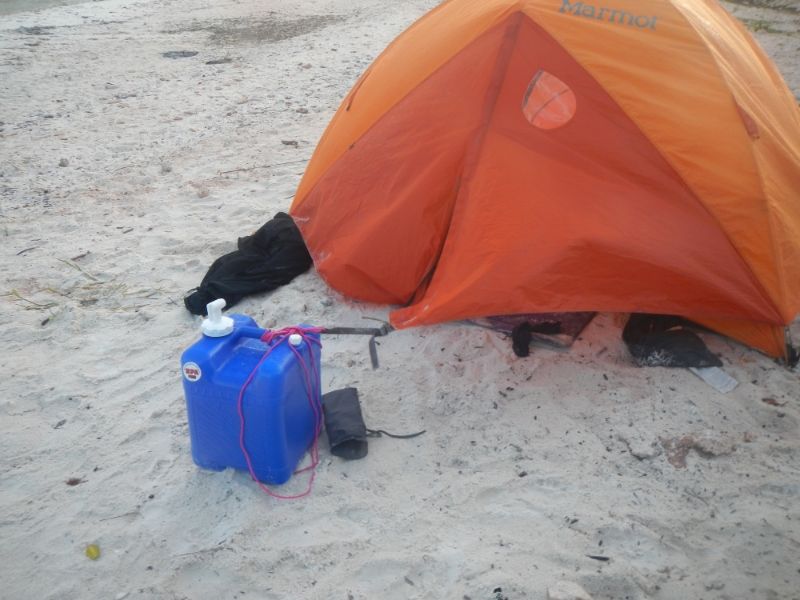
Why a hard sided container? Because these varmints will rob you blind. Same for food, which is often impossible to hang.(some beaches really have no accessible shade and coons climb well)

This from an airboat tour. Raccoons have to work hard to find fresh water, which they mainly find from dew. But if given the opportunity, bottled water is a target.
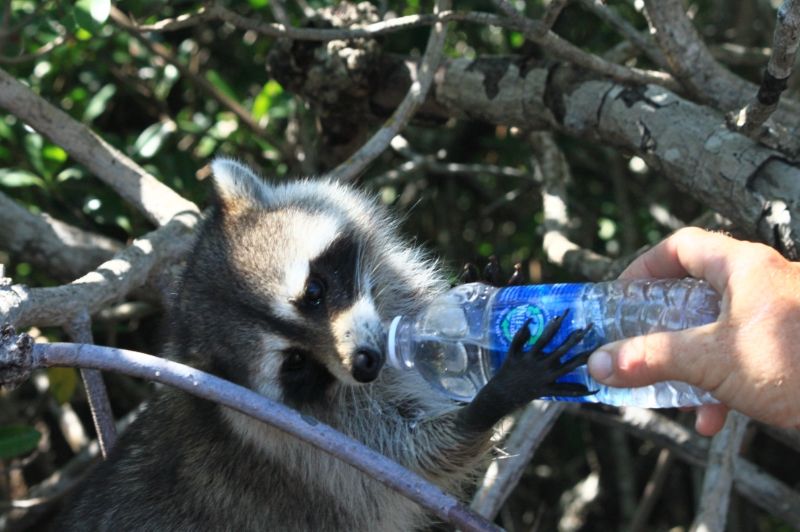
Other challenges are wind, waves and tidal currents.
The wind typically builds to 15-20 mph by 11 am but strong cold fronts can bring higher winds from the north. You can count on being windbound at least once out of every three afternoons..not unlike Lake Superior. It is possible to paddle at night or start before sunrise to beat the wind. Likewise dense fog can happen. Most folks envision the Glades as a swamp , but this scene is far more typical. Big sky country.
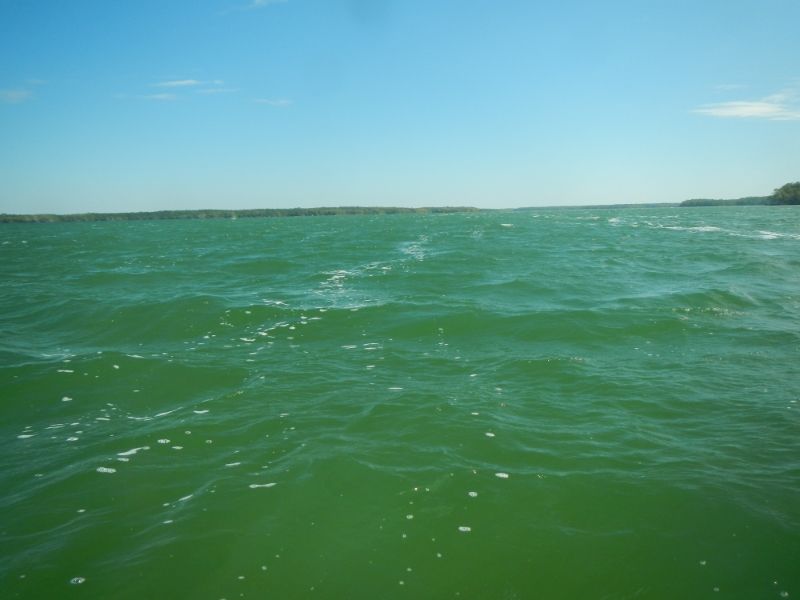
The tide range isn’t much..about three feet but tidal currents can run 3-4 mph. So when opposing wind and tide meet, standing waves can result.
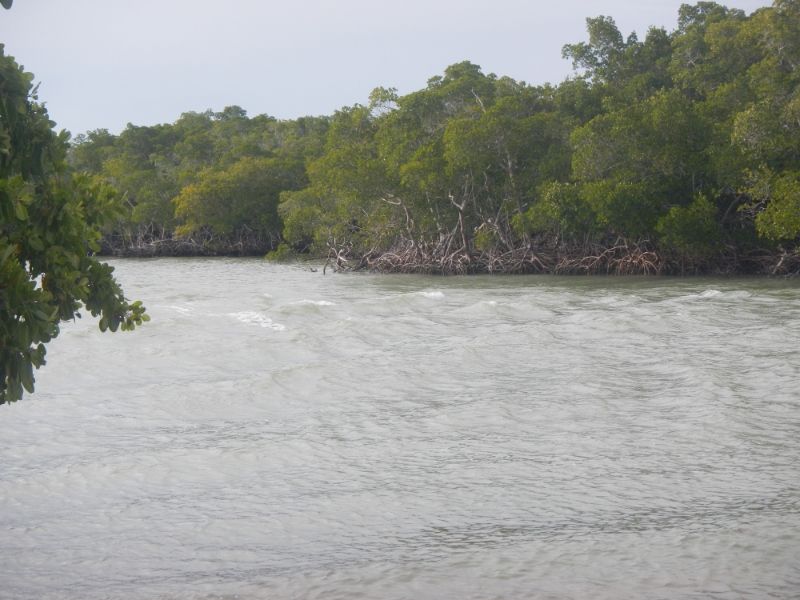
Peaceful arrival on Jewel key
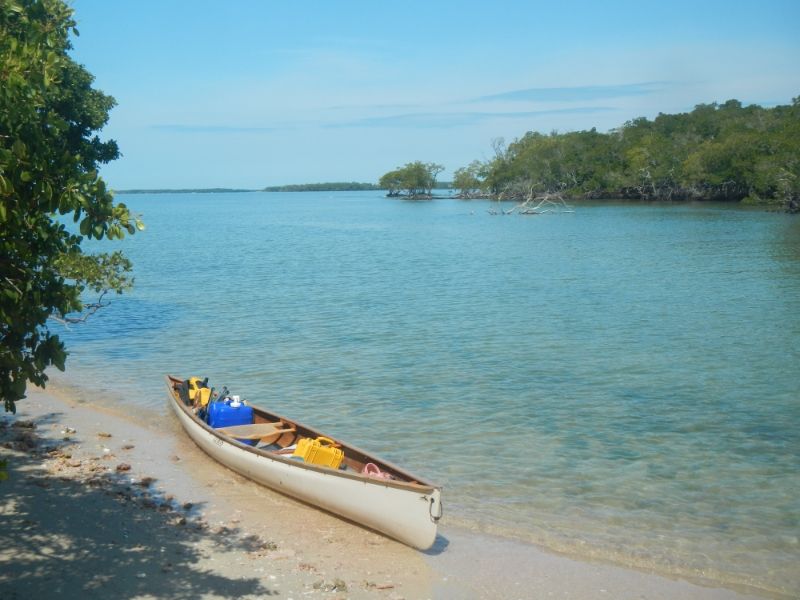
New Turkey Key
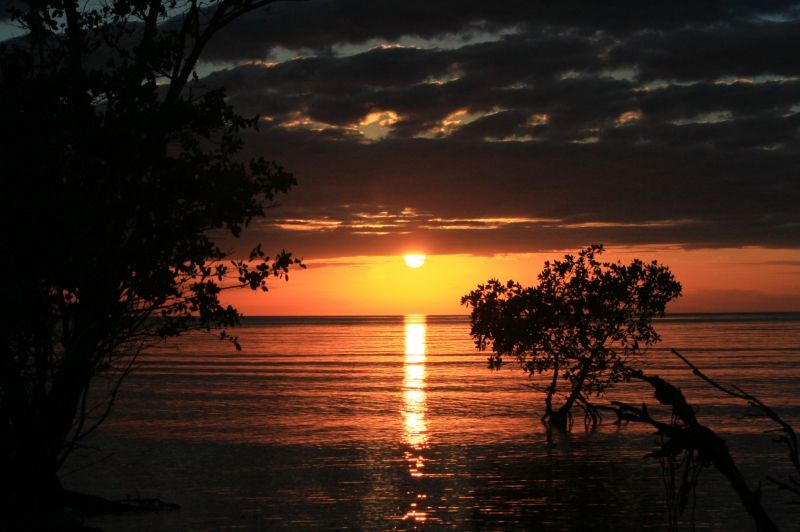
For those used to Northern canoe camping trips, the Everglades can seem foreign and intimidating. Most people think first of alligators and snakes to contend with, but in paddling country you will see little of the former. And in 100 days of canoe camping in the Everglades, I have yet to see a snake. Gators prefer fresh water. Your best chance of finding them is along the highway or on an airboat tour. Airboats do not venture into the Gulf and are prohibited in the National Park. So here is your one alligator picture.
Taken in the early AM near Sweetwater Chickee which is in a freshwater area north of the Wilderness Waterway.

There are nearly 1000 miles of paddling trails in the Everglades. With a good chart and a mapping GPS you can make your own trip. People often say “I did the Everglades” when all they did was paddle the 99 mile long Wilderness Waterway. That route was designed for motorboats in the 1970’s to increase use of the National Park. The chickees were designed for motorboaters and for years lacked ladders. Of course there is way more use nowadays by paddlers than motorboaters. The point is that there is way more variety in ecosystems you see if you avoid the Waterway. I use parts of it and parts north of it and often loop back along the Gulf of Mexico.
Chickee mounting has its own set of challenges. I use a set of loops to snug the boat to the ladder tight.

You can never have too many lines. Of course bow and stern lines are de rigeur to tie the boat up. Also a consideration is to keep the boat away from the decking lest high tide jam it under the planks.
Why? Cause sometimes you have to stand on the gunwale to get a leg up to that bottom rung of the ladder, especially at low tide!( note location of bottom step)

It’s unsettling to drop things through the spaces in the chickee floorboards, and to get sand in your stove or soup while on beaches. A square of packcloth comes in mighty handy.

That’s a CampTime Roll A Chair..it’s a bit much at $50 but gives good back support, is very light and does not sink in the sand. Plus its normal chair height for us oldsters.
Let’s talk of campsite hazards. First is oyster bars. On the Gulf you may land at low tide and be presented with oyster bars to cross. They are incredibly sharp. Don’t even think of going barefoot or wearing open toed sandals! Those clumps of black at the bottom of the mangrove prop roots are oysters. I wear wetsuit booties with fairly thick soles so in case I step in mud they don’t get pulled off.

Other things that can stick you at camp. Prickly pear cactus.

Sandbur. If you wade through grass LOOK first. There are several native grasses. Some are fine. Some have these!
These little hand grenades are about a quarter inch across. Wade through low grass and you may have to take hundreds off. Plus they WILL go through Crocs. Imagine your feet in open toed sandals in this!

More pricky stuff.. Seed pods. But they hang from tree branches and can be avoided

Bugs. DEET seems to have little effect on tropical biting bugs including no seeums (they seem to be different than Northern ones) so a wardrobe of bug spray might be needed. I have had good luck with the cactus juice one(in the middle with the label gone). It’s hard to find, but I have not been tempted to run and break off a prickly pear cactus and spread goo on me.

Sanitation. It seems unsightly that most campsites have portapotties, and in plain sight of the water. But they are serviced by boat, and the boat has to get close enough to have a hose reach the tank.
Here is SS Stinky, which services each site once a week.

Big blue jug. There is no easily reachable source of fresh water in the Everglades so you have to bring a gallon a day per person. In a hard sided container. This does double duty as a deadman to anchor your tent. Its best to put the tent on the beach and not in the buggy woods. Cross ventilation is a plus especially in the buggy early morning. The wind had started to blow here. Later it actually flattened a side of the tent. Always plan for wind, and tie both ends of your canoe at night

Why a hard sided container? Because these varmints will rob you blind. Same for food, which is often impossible to hang.(some beaches really have no accessible shade and coons climb well)

This from an airboat tour. Raccoons have to work hard to find fresh water, which they mainly find from dew. But if given the opportunity, bottled water is a target.

Other challenges are wind, waves and tidal currents.
The wind typically builds to 15-20 mph by 11 am but strong cold fronts can bring higher winds from the north. You can count on being windbound at least once out of every three afternoons..not unlike Lake Superior. It is possible to paddle at night or start before sunrise to beat the wind. Likewise dense fog can happen. Most folks envision the Glades as a swamp , but this scene is far more typical. Big sky country.

The tide range isn’t much..about three feet but tidal currents can run 3-4 mph. So when opposing wind and tide meet, standing waves can result.

Peaceful arrival on Jewel key

New Turkey Key

